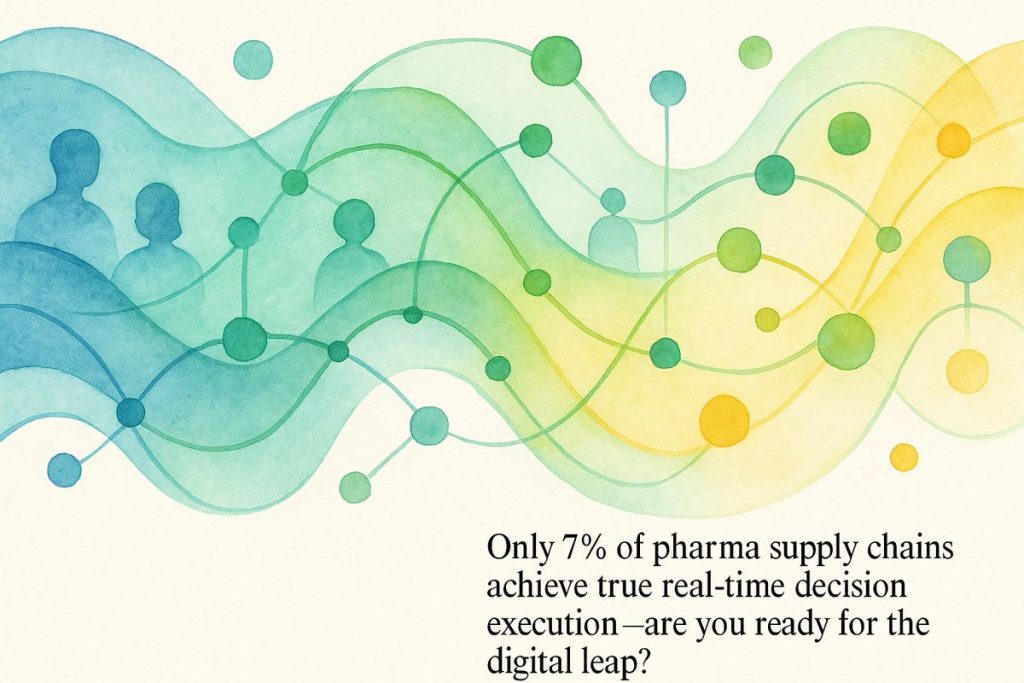Gartner’s 2025 guidance says the most important pharma supply chain KPIs are service and reliability, inventory optimization, compliance, customer experience, and agility. These KPIs act like the heartbeat of the operation, making sure medicine gets to patients safely and on time. Digital tools and AI are helping transform messy data into clear insights, but technology only works if used wisely. As regulations get stricter and customers expect more, pharma companies must balance speed, safety, and flexibility in every step they take.
What are the most important KPIs for pharma supply chains according to Gartner’s 2025 guidance?
The most important pharma supply chain KPIs, per Gartner’s 2025 guidance, are:
- Service and reliability (fill rate, OTIF, perfect order rate)
- Inventory optimization
- Compliance and traceability
- Customer experience
- Agility (time-to-recovery, scenario modeling)
These KPIs ensure patient safety, regulatory compliance, and operational efficiency.
A New Era for Measuring What Matters
Let’s get this out of the way: supply chain KPIs in pharma aren’t just bureaucratic wallpaper—they’re the pulse, the ECG readout, of operational health. I remember, years back, staring at a dashboard so cluttered with numbers it resembled a Jackson Pollock. Which to trust? Which matter? I felt both awed and faintly nauseous. (You know that scent of stale coffee and heated plastic that seems endemic to pharma backrooms?) That was 2019. Fast-forward to Gartner’s 2025 guidance and, well, the landscape’s been redrawn.
Gartner steps into the fray with its Hierarchy of Supply Chain Metrics Tool—think of it like a hyperspectral lens for KPIs, revealing not just individual colors but patterns otherwise invisible to the naked eye. Rather than drowning in a sea of metrics, leaders are encouraged to triangulate: What’s critical for the patient, the regulator, and the bottom line? It’s a far cry from the days when “inventory turns” reigned supreme, unchallenged.
But here’s the rub: optimizing one KPI can kneecap another. Picture a world-class inventory turnover—until a surprise FDA audit reveals you’ve neglected expiry management. Sub-optimization, Gartner warns, is the supply chain’s own version of cutting off your nose to spite your face.
Choosing KPIs: From Theory to Tangible Tactics
Okay, so which KPIs should actually make the cut? Gartner’s frameworks—equal parts Rubik’s Cube and recipe card—break it down across five domains: service and reliability, inventory optimization, compliance and traceability, customer experience, and agility. That’s a mouthful. Yet each has bite.
Service and reliability demand precision: fill rate, on-time in-full (OTIF), perfect order rate. In pharma, a late shipment isn’t merely an inconvenience; it’s a risk to patient safety. I had to stop and ask myself whether my team’s fixation on cost savings was blinding us to the emotional stakes. Turns out, according to this survey, over 80% of companies now tie supply chain KPIs to customer satisfaction—no surprise there.
Inventory optimization? Here’s where things get baroque. Cold chain requirements, expiration tracking, SKU proliferation—it’s like trying to keep a soufflé from collapsing in an earthquake. Then there’s compliance: serialization, chain-of-custody, and temperature excursions, all rigorously monitored by the likes of the FDA and EMA. You can almost hear the soft whir of IoT sensors ticking away, each one a sentry against disaster.
Customer experience, once a side dish, is now the entrée. Pharma supply chains are expected to anticipate, adapt, and delight—or at least not disappoint. And agility? If the pandemic taught us anything, it’s that time-to-recovery and scenario modeling aren’t luxuries, they’re lifelines.
Digital Transformation: From Data Swamps to Crystal Streams
Here’s a sobering metric: only 7% of pharma supply chains achieve genuine real-time execution, while 95% say they need it, per Gartner’s Future of Supply Chains 2025. That gap’s as wide as the Volga in spring.
Digital tools like SAP Integrated Business Planning (IBP) and S/4HANA are touted as panaceas—a little like Prometheus bringing fire to mortals. When integrated properly (a big if), these platforms turn data swamps into crystal streams, enabling demand-driven planning, compliance automation, and working capital optimization. I once tried to shortcut integration (ah, hubris), only to trigger a week’s worth of reconciliation agony. Lesson learned.
But—there’s always a but—technology is only as good as its implementation. The lure of a “set it and forget it” system is strong, but digital maturity is a moving target. Smell that? Opportunity…but also risk.
Generative AI: The Next KPI Frontier?
Gartner’s latest prophecy: by 2028, a quarter of logistics KPI reporting will be powered by generative AI (see here). Imagine an AI assistant riffing through millions of datapoints, surfacing root causes like a detective with a hyperspectral flashlight. That’s not science fiction; it’s the whisper of things to come.
In pharma, where one botched batch recall can unleash regulatory hellfire, speed and nuance in KPI reporting are priceless. GenAI can conjure up scorecards, synthesize root-cause narratives, and flag anomalies before your morning espresso is brewed. Will it replace human intuition? Hardly. But it will, I suspect, change how we see patterns—sort of like moving from Morse code to Dolby surround.
Still, I’m cautious. (Insert a half-sheepish, half-excited shrug here.) Techno-optimism must be tempered with the human factor: garbage in, garbage out.
Regulatory Dragnet and the Human Element
Compliance isn’t just a box-tick; it’s a high-stakes chess match played on a global board. Serialization, temperature and humidity monitoring, chain-of-custody—all now woven as tightly into the supply chain fabric as DNA is to a cell.
